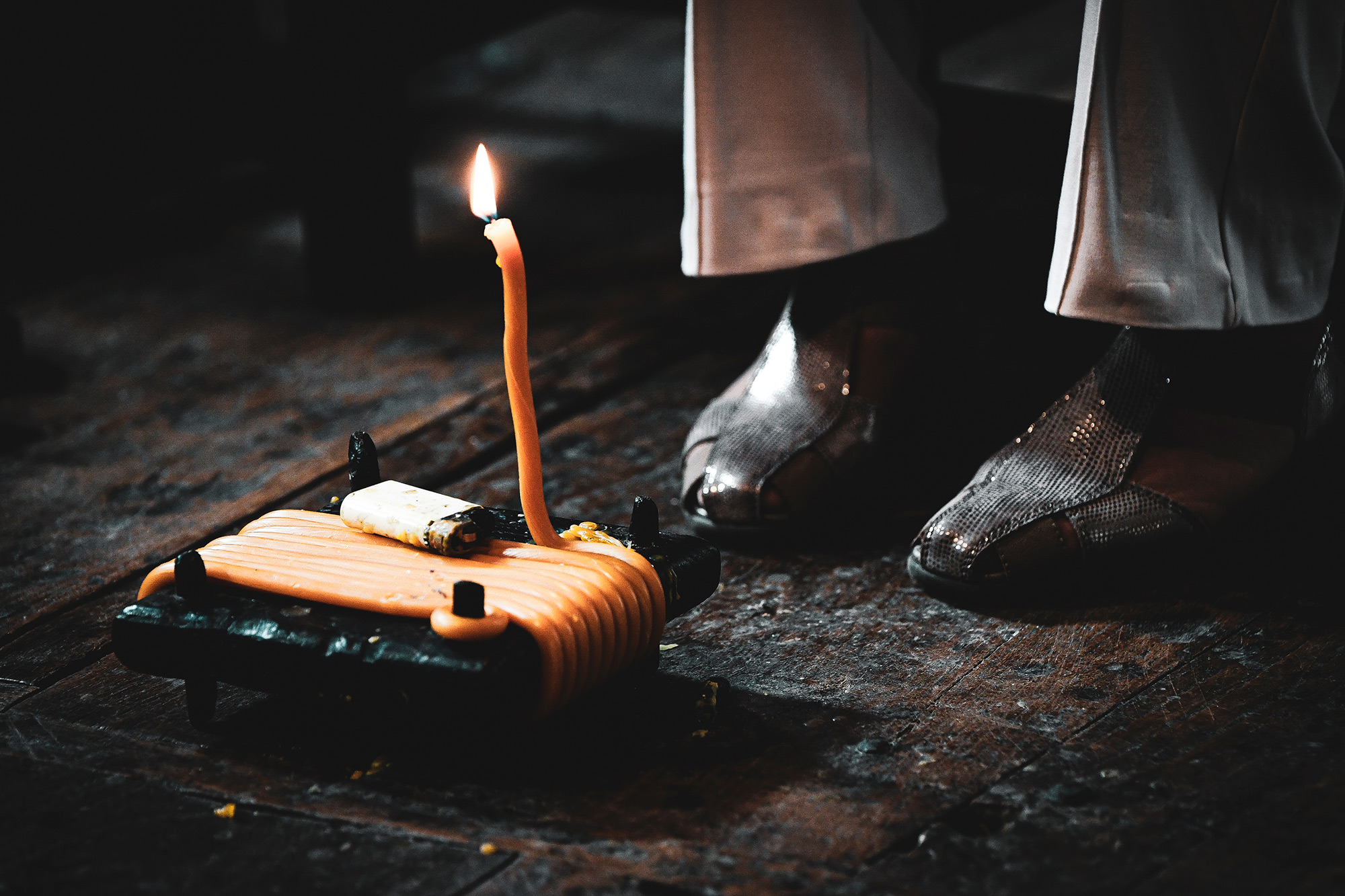"Álava has been largely forgotten in Basque anthropology"
- The José Miguel de Barandiaran Foundation is headed for the first time by a woman: The actress of Vitoria-Gasteiz, Ixone Fernández de Labastida, will also play in Málaga.

The José Miguel de Barandiaran Foundation has renewed its presidency since October: Ixone Fernández de Labastida Medina (Vitoria-Gasteiz, 1979). The Doctor of Anthropology and professor of the Department of Philosophy of Values and Social Anthropology at UPV/EHU and the Faculty of Labor Relations and Social Work has replaced Josemari Velez de Mendizabal Azkarraga, who has been in office for the last eight years.
President of the José Miguel de Barandiaran Foundation. The big challenge ahead?
Yes, the challenge is to run a foundation of this kind; being before a foundation dedicated to culture or knowledge of anthropology, in addition, requires you to be subject to the sociopolitical and economic context. In recent years, Velez de Mendizabal has managed to recover his lines of work and, among other things, the scholarship. Among the challenges I have, the main one is to delve more deeply into the scientific nature of the foundation or the scientificity demanded by Barandiaran.
Are you, moreover, the first woman to take up that position?
Yes, and for me it's a double honor. On the one hand, I am not surprised that she has been the first woman to have been in the presidency since 1988; in a foundation such as this, as in other areas, there is still priority for men. However, the structure of the Foundation is currently paritarian. It is an honour, on the one hand, because one of my lines of research is that of issues related to equality; I am working within the research group on feminist anthropology AFIT. Also for Barandiaran, the figure of the woman was very important: first the figure of her mother and then the figure of her granddaughter Pilar.
In the presentation of the position, you mentioned that "to a large extent I am an anthropologist thanks to Barandiaran." What has the ataundarra brought to you to channel your profession?
By Barandiaran's death, I learned what anthropology was thanks to the interviews and audio-visual that I was launched on television; I loved what he did, how he explained that magical world about Basque mythology. Later, when studying anthropology at the UPV, Barandiaran's figure emerged from the hand of another Ataundarra: By the hand of anthropologist Joxe Martin Apalategi. My thesis greatly influenced his contributions: his systematization in research, his rigidity or the questionnaire, among others.
He chose Álava for the thesis. Since 1984, you made your thesis on the survival of Mendialdea's horse farming and repudiation of pork, right?
That's right. I was clear that I wanted to do it in Álava. In my undergraduate studies I discovered that Basque anthropology had forgotten the Mediterranean aspect of Álava and Navarre; in the definition of Basque culture, the life forms of the area did not appear. So I came to the Alavesa Mountain, because customs and local life have remained more intense. There I met with the native equine race: in terms of cultural construction, through this animal I got to know the identity of the local community and allowed me to analyze a local product around economic construction.
On the 25th anniversary of Barandiaran's death, you wrote about his values. How did this opportunity come about?
On the occasion of the anniversary, he organised a very nice and emotional tribute throughout Euskal Herria, especially in which Barandiaran’s connection with Europe was united. I based myself mainly on two values: on the one hand, in the Europe of the early twentieth century liberated Euskal Herria from the dangerous discourses of race; until then, in anthropological studies the word race appeared, which gave importance not only to physiognomic characteristics, but also to cultural ones, and began to speak of the Basque ethnicity. On the other hand, while he placed the center of Basque culture in the hamlet and on the Atlantic side, he did not deny that there were models of Basque culture in Álava and Navarre, and he pushed many people to investigate. In the tribute I thanked him for these two values.
Did you then get into the foundation?
Yes, that tribute was my first contact with the foundation. Since then, I took part in the jury of the research grant and later entered the editorial of the Basque Folklore yearbook.
The foundation was created in 1988 by Barandiaran and Eusko Ikaskuntza. With what purpose?
At that time, Barandiaran was president of Eusko Ikaskuntza, and he was already concerned about what was going to happen to his investigations. In addition to supporting the contributions made, he saw the need to open the lines of research opened by himself to the new researchers; not only the Basque Government and the Government of Navarra, the three deputies and the City of Ataun considered the creation of a foundation urgent.
Do people today know who Barandiaran was or is there a lot of work to do?
The figure of Barandiaran is widespread in our society, perhaps the image diffuses because we understand it as something of the past, but it is true that its studies and contributions are very current. They say that Barandiaran was the first universal ataundarra: on the one hand, because he knew and learned the anthropological and archaeological research that was on the surface of the Europe of the time and, later, brought his studies to Europe, making known the reality of the area. This is why their contributions remain valuable to society in general, to learn about Basque culture and prehistory, and especially to those who are learning these disciplines.
In this task you have several projects in hand, including the project '1,2,3... Project 'Barandiaran'. What does it consist of?
The Foundation has long set out to make a series of videos to reach the young audience and in collaboration with the producer Hezimubi we have done two seasons: through cartoons, the life of 102 years has been divided into several chapters, selecting some passages of Barandiaran's life. The first season consists of five chapters in which the journey to exile is explained. We start on December 3 with the second season, each Tuesday we release a weekly chapter until December 31, the date of your birthday. These are videos that are very useful not only for young people, but also for the elderly, to get to know Barandiaran's image.
On the other hand, you also publish the yearbook of the Folklore Vasco...
That's right. The first issue of the journal was published in 1921 by Barandiaran, who is about to turn a hundred years old. The objective has always been to publicize the results of research related to Basque anthropology and archaeology, but four years ago we decided to renew it. We changed the drafting group, Abel Ariznabarreta is now the director, and in addition to the format, the contents have also been updated. You can find topics related to current Basque society and culture: we choose topics and ask the experts for writings.
In addition, they have recovered the call for scholarships...
Marked by the context, and after several years of standstill, the first members of the board and the lehendakari managed to get it back on track. This is an important scholarship because it allows exhaustive research related to anthropology and archaeology over a year. In recent calls we have given priority to the people who have begun to research in these fields of knowledge.
You support projects that work on various topics. For example, in 2016, the project 'Sare e(t)nology of wine in Rioja Alavesa'. Is Álava a benchmark today?
I was very pleased that this project won, it is a very important task that the two Gipuzkoans have done. Álava, as I said before, has been largely forgotten in Basque anthropology, has always looked towards the Atlantic side; the truth is that the geographical structure of the country and the reality of the language are different.
Before concluding, on what subjects would you like to deepen?
I have a lot of issues in my head, but I don't have time to address them. But today I'm with feminist anthropology, it's a topic that I'm really interested in. In addition, I would like to develop a theme derived from the thesis: the anthropology of food. Where does our aversion or hobby for food come from, the cultural criteria behind food, etc. I would like to return to this issue.
In the last two centuries the concept of “culture” has been given importance. When industrialization, capitalism and Eurocentric imperialism were destroying hundreds of popular cultures, curiosity was awakened by cultures that were on the way to being lost in many... [+]

















